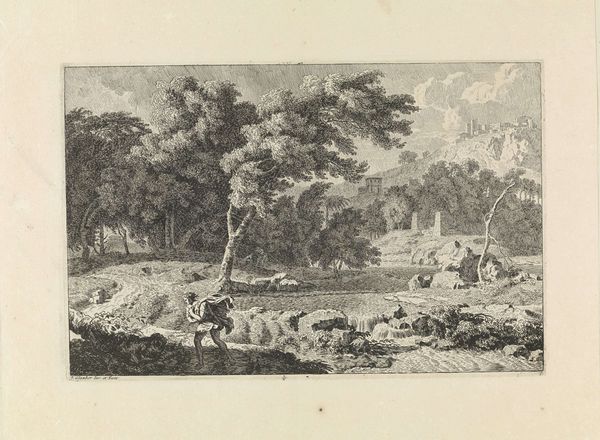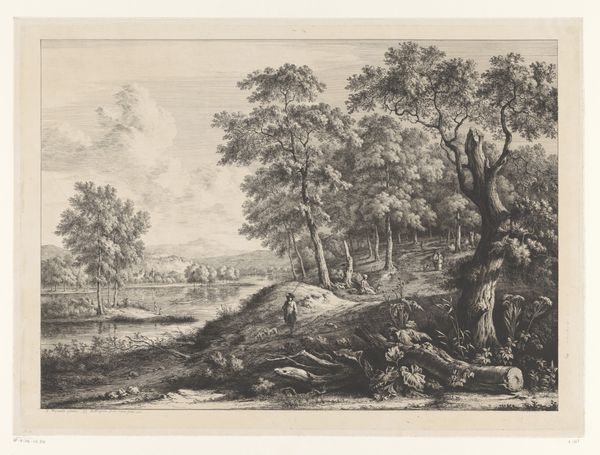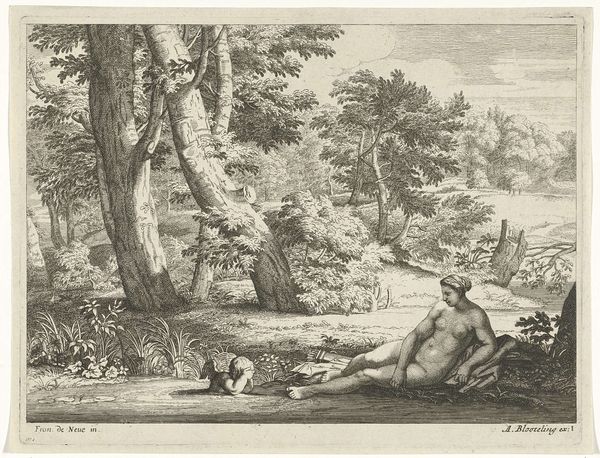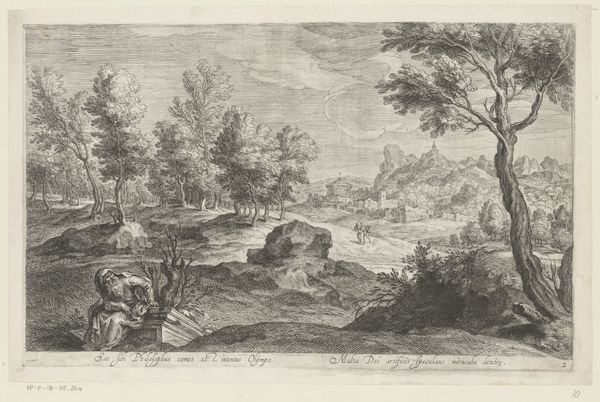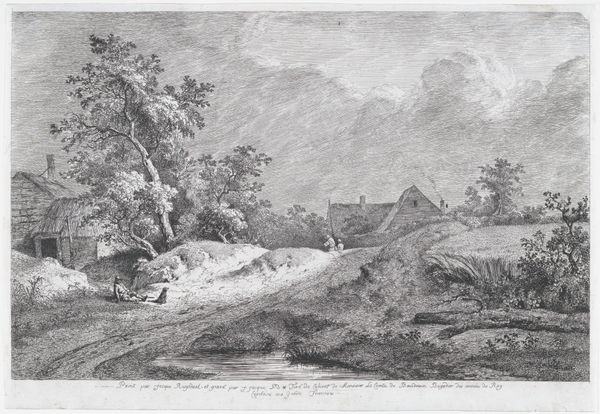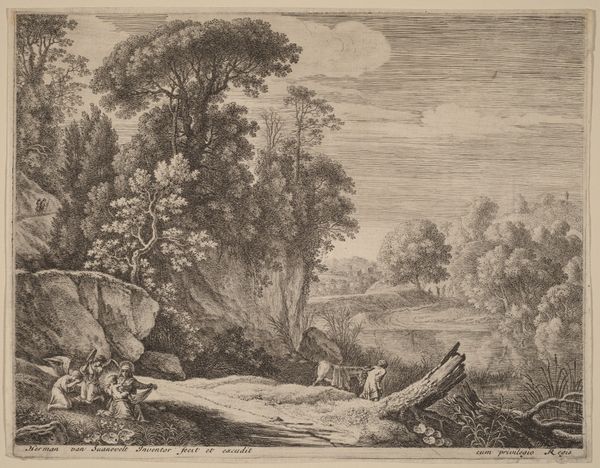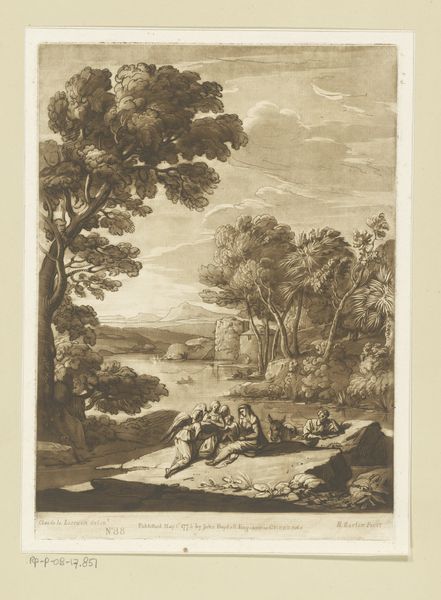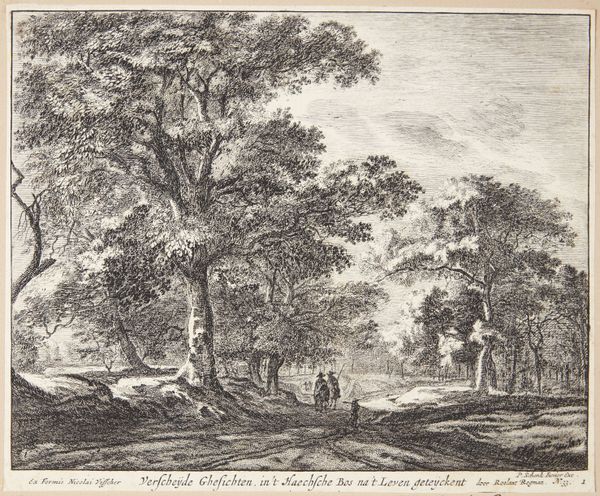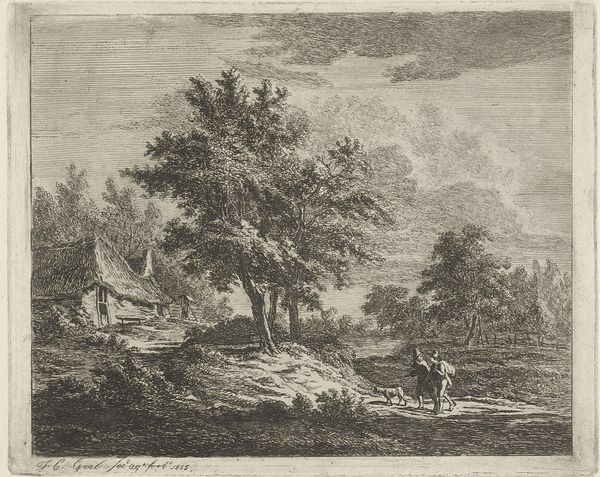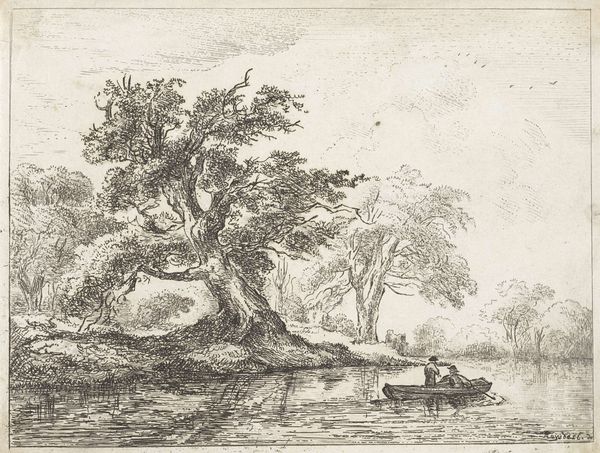
Dimensions: height 245 mm, width 334 mm
Copyright: Rijks Museum: Open Domain
Editor: Here we have Johannes Arnoldus Boland’s "Landschap met waterval," or "Landscape with Waterfall," an engraving from around 1860 to 1900. It's stunning! The scene feels very theatrical, almost staged, with the dramatic waterfall and those looming trees. What visual stories do you think it's trying to tell? Curator: It is true; theatricality is definitely a core part of its symbolic power. Think about how water is often used in art: purification, renewal, the passage of time. Here, the waterfall is central. Doesn't it appear almost violent in contrast to the pastoral setting? Editor: It does have that tension, yes! The peaceful background with the rushing water in the foreground… Curator: Exactly. It speaks to the Romantic era's fascination with the sublime, that potent mix of awe and terror we experience when confronted with nature's raw power. How does the symbolism affect your impression of the artist? Editor: I see, so it's not just a pretty picture, but a reflection of deeper human emotions and our relationship with nature. It's like the artist is wrestling with these big ideas. Curator: Precisely. The symbols act as memory triggers; do the crashing waters suggest emotional turbulence? The solid rocks enduring hardship? Do we see the artist using visual language to remind us that even in idyllic landscapes, there is struggle and impermanence? Editor: It definitely adds another layer to the piece. I originally saw it as just a landscape, but now I realize how much meaning can be packed into a single image. Curator: It makes us realize that cultural memory persists through these symbols; the meaning accrues. By engaging with these visual shorthands, the artist connects us to a wider conversation about what it means to be human.
Comments
No comments
Be the first to comment and join the conversation on the ultimate creative platform.
